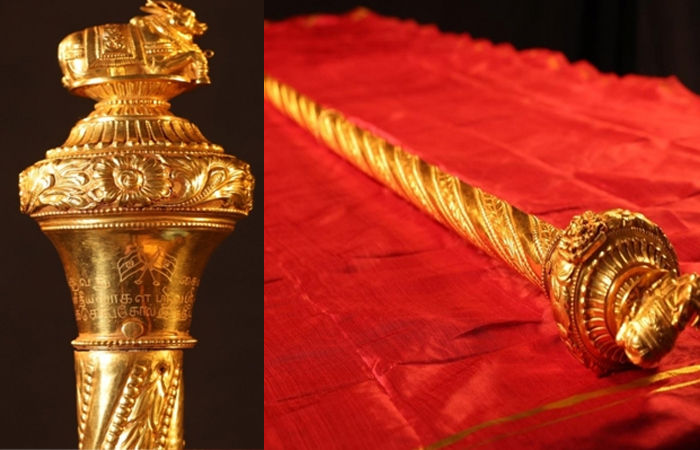[ad_1]

Importance of Sengol in India: The first session of Parliament is going on after the 18th Lok Sabha elections. During the oath taking ceremony of the newly elected Lok Sabha members and the election of the Speaker, the tussle between the ruling party and the opposition continued. Apart from this, the issue of the Sengol installed in the Parliament has also been added. The opposition forces have demanded the removal of the Sengol installed near the Speaker's seat in the Parliament House.
The rhetoric went hand in hand with the demand for Sengol's removal
Samajwadi Party's Rajya Sabha MP RK Chaudhary said, 'Sengol is a symbol of monarchy. It should be removed and replaced with the Constitution because the Constitution is a symbol of democracy. 'Sengol' means 'royal stick' and the other meaning is 'king's scepter'. Our country became independent after the monarchy ended. So will the country be run by the king's stick again? To save the Constitution, Sengol should be removed from the Parliament.'
Apart from Samajwadi Party, Congress, RJD and Shiv Sena (UBT) also supported RK Chaudhary's statement. Shiv Sena (UBT) leader Sanjay Raut said, 'The Constitution is more important.' Congress MP Renuka Chaudhary said, 'BJP has imposed Sengol on its own will. SP's demand is not wrong. Parliament has to take everyone along, but BJP works arbitrarily.' RJD leader Misa Bharti said, 'There is democracy in the country, not monarchy. Sengol is a symbol of monarchy, keep it in the museum.'
Against this, BJP Lok Sabha MP Khagen Murmu, MP Mahesh Jethmalani, Union Minister Jayant Chaudhary, LJP leader Chirag Paswan and BJP MP Ravi Kishan gave statements in favor of Sengol, the tone of which was something like this, because the opposition party has nothing to do, it is wrong about the Constitution, nobody can remove Sengol from the Parliament House.
Design, symbolism and significance of sengol
'Sengol' is a word derived from the Tamil language. The word 'Sengol' is derived from the Tamil words 'semai' (righteousness/religiousness) and 'kol' (stick). It means 'just fine'.
The history of Sengol is linked to the Chola Empire. In ancient India, when a new king was crowned and ascended the throne, he was given a Sengol as a symbol of good governance. The holder of the Sengol had to follow the rules, so it was called a scepter. Sengol used to remind the king of his judicial duties. The scepter has also been considered a tool to curb the autocracy of the king. Even during the Ramayana and Mahabharata period, when succession was handed over, the crown worn on the king's head was considered a type of scepter.
The approximately 5 feet (1.5 m) tall 'Sengol' is made of silver and decorated with gold. It has a carving of Nandi on its top. Nandi, the vehicle of Lord Shiva, is seen as a 'symbol of religion'. In pagodas, Nandi always sits in a steady posture facing Shiva. This stability of Nandi inspires the king to remain firm on his rule. Nandi is also a symbol of dedication. Nandi was chosen instead of any other animal for Sengol in the spirit that both the king and the subjects are devoted to the kingdom. Goddess Lakshmi is carved in the lower part of Nandi and there is greenery around him in the form of flowers, leaves and creepers, which symbolizes the prosperity of the kingdom.
History of Sengol in Modern India
During the last tenure of Prime Minister Narendra Modi, when the BJP government established 'Sengol' in the Parliament, there was a discussion about Sengol in the whole country. However, the modern history of Sengol is linked to the independence of India. When the country became independent in 1947, Sengol was handed over to the then Prime Minister Jawaharlal Nehru as a symbol of transfer of power. After this, it was kept in the Allahabad Museum. When the current Prime Minister has returned the symbol of religion, Sengol, to the Parliament, politics has heated up on that issue as well.
 look news india
look news india